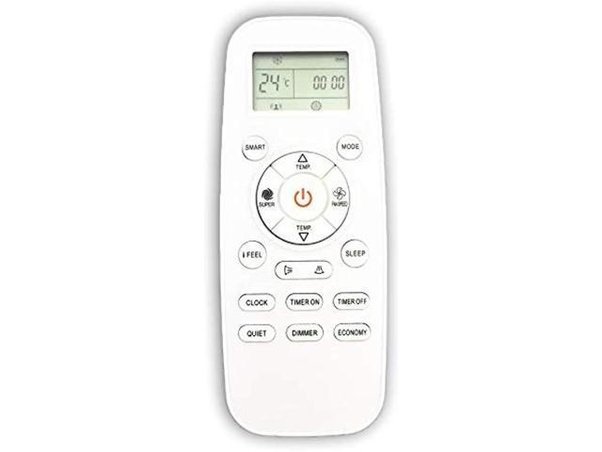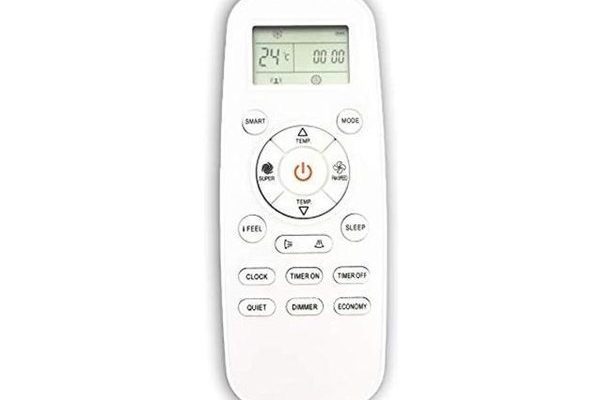
GE (General Electric) makes some pretty dependable air conditioners, and their remotes are usually straightforward. Point, click, chill—repeat all summer. But when things go silent, signal interference is often the invisible villain. From household gadgets to simple obstacles, a bunch of little things can scramble or weaken the signal between your GE AC remote and the unit itself. And honestly? Most people don’t even realize how much chaos a couple of random items (or weak batteries) can cause in the land of infrared signals.
Think of the remote’s signal like a flashlight beam in a dark room: If something blocks the beam or throws a bunch of paint in the air, it gets scattered or stops short. The same thing happens with your AC’s remote signal—it has to travel clearly and unbroken right to the unit’s receiver. Let me walk you through the main culprits and what you can do about them, so you don’t get stuck sweating and confused next time your remote goes radio silent.
How GE AC Remotes Send Signals
Before diving into what messes things up, it’s helpful to know just how these remotes communicate with your air conditioner. GE AC remotes use something called *infrared* (IR) light to send commands. You can’t see IR with your eyes—it’s just outside the range of visible light—but it works a bit like shining a tiny, invisible flashlight at a sensor on the AC unit.
Here’s the thing: When you press a button, the remote sends a specific “code” of flashes using IR light. This code tells the AC to turn on, adjust the temperature, or whatever else you want it to do. For all of this to work, the path between your remote and the unit has to be clear—and the codes have to be received accurately.
Ever try using your remote from another room or behind a wall? No luck, right? That’s because IR signals can’t penetrate solid objects. Even thick curtains or dusty covers can scatter or block these signals. Universal remotes and original GE models both use this same basic method, so the story is the same across brands.
Common Household Obstacles
Let’s talk about the usual suspects living in your living room (or bedroom) that might mess with your remote. *Physical barriers* are the number one cause of signal interference for a GE AC remote. If you’ve placed a pile of laundry, a stack of books, or even a decorative vase right in front of the AC sensor, you might as well be trying to talk through a closed door.
- Objects like furniture, plants, or electronics between the remote and the air conditioner can block the infrared beam.
- Wall-mounted AC units can be especially tricky if the sensor isn’t pointed where you usually stand or sit.
- Sometimes, a TV or a picture frame will reflect or absorb enough IR to cause issues.
Honestly, it’s easy to forget that even transparent surfaces—like grubby glass windows or plastic covers—can also scatter the signal. The solution? Make sure there’s a clear line of sight. Pretend you’re shining a tiny flashlight from your hand to the AC’s sensor: If anything’s in the way, try moving it or adjusting your angle.
Other Devices and Electronic Interference
You might be wondering, “Can my other electronics really mess with my GE AC remote?” Yes, surprisingly often. Many modern homes are packed with gadgets—TV remotes, Wi-Fi routers, smart bulbs, even phone chargers. Some of these emit rogue IR signals, RF (radio frequency) noise, or just plain electromagnetic interference.
Here’s why this matters: If you’ve got a lot of remotes lying around, or gadgets with flashing LED lights, those could be confusing the AC’s sensor. It’s like being at a party with ten people shouting your name—you’re not sure which “Hey, you!” is for you. Devices like cable boxes, DVD players, or even some wireless speakers can cross signals or add static that throws off the remote’s code.
To troubleshoot, try turning off or moving other electronics temporarily, especially if you noticed your remote started misbehaving after adding a new gadget nearby. In rare cases, you might need to *pair* or *reset* the remote and AC unit to make sure the right codes are getting through.
Weak or Failing Batteries
This one sounds silly, but truly, *battery problems* are probably the number-one overlooked cause of remote issues. Old or weak batteries mean a dimmer IR signal—sort of like using a flashlight with dying batteries. The beam just doesn’t go as far or as clearly.
When batteries are on their last legs, the signal might work if you point super close, but not across the room. Sometimes, a remote acts flaky, working one moment and failing the next. That’s the classic sign the batteries need a swap.
- Always use fresh, matching batteries in your GE AC remote (never mix old and new).
- Check for any corrosion or rust on the contacts inside the battery compartment. That builds up over time and weakens the circuit.
- If your remote still won’t respond after new batteries, try a quick reset—remove the batteries, wait a minute, then pop them back in. Think of it as a little power-nap for your remote’s brain.
Sunlight and Strong Light Sources
Here’s something most people don’t realize: *Strong sunlight* or intense artificial lights can actually “drown out” your remote’s infrared signal. IR light isn’t unique to remotes—it’s in sunlight and some types of lighting too. So if your AC unit’s sensor is basking in a sunbeam, it might just be overloaded.
I’ve seen this a lot in rooms with big windows or skylights. Suddenly, remotes only work after the sun goes down (weird, right?). Try shielding the sensor with your hand, or moving the unit slightly out of direct light for a quick fix. If your lamp or TV stand is right by the AC, try shifting things around to see if that helps.
If your GE AC remote only acts up in certain parts of the day, look at where the sunlight hits and you might find your answer.
Remote and Unit Not Paired or Synced Properly
Some newer GE air conditioners and remotes need to be paired or synced, especially if you’ve had to reset the unit or got a replacement remote. If the remote’s codes don’t match what the AC expects, you’ll get radio silence no matter how hard you mash those buttons.
Pairing usually involves pressing a tiny button on the AC unit, or following a sequence of button presses on the remote (check your manual for the exact dance). If you’ve got a universal remote, make sure it’s programmed with the right code for your GE model—otherwise, you’re firing off the wrong commands.
After a power outage or some electrical weirdness, sometimes the remote and AC just lose sync. It’s annoying, but a quick reset and re-pair usually fixes things up. Just remember to point the remote right at the sensor during this process for the best chance of success.
Dirty or Blocked Remote and Sensor
It sounds a bit gross, but dust, smudges, or sticky fingerprints can really mess up the IR transmitter on your remote or the receiver on the air conditioner. I’ve cleaned off remotes with a soft cloth and suddenly—bam!—everything works as if by magic.
- Wipe both the front of your remote (the “glass” or plastic bit) and the little window on the AC unit itself with a microfiber cloth.
- If there’s stubborn grime, a dab of rubbing alcohol (on the cloth, not directly!) can help.
- Watch out for built-up dust or hair around wall-mounted units, too, since that can block sensors easily over time.
That tiny bit of cleaning can make the difference between “Why won’t this stupid thing work?” and “Oh wow, it’s fixed!”
When a Universal Remote Isn’t the Same
Universal remotes are tempting—one device to rule them all! But honestly? They can be a headache if not set up precisely. If your universal remote isn’t programmed with the right code for your GE AC, you’ll get weak, incomplete, or totally garbled signals. Even when programmed correctly, some universal remotes don’t perfectly mimic the original’s signal quality.
If your AC responds slowly or not at all, double-check the code you entered matches your exact GE model. And keep in mind—sometimes, only the genuine GE remote will work reliably for every function. Universal remotes are decent backups, but the original is usually your best bet for seamless control and troubleshooting.
Troubleshooting Recap and Final Thoughts
So, what actually causes signal interference for a GE AC remote? Turns out, it’s a whole cocktail of possible culprits—physical objects blocking the path, other electronics tossing out confusing signals, weak batteries, too much sunlight, dirty sensors, or a remote that’s not properly paired with your unit. Sometimes it’s just one sneaky little thing that’s easy to fix, and sometimes, well, it’s a perfect storm.
Honestly, the easiest way to fix remote signal issues is to slow down, check the obvious stuff first (like batteries and obstacles), and then work your way up to the more technical troubleshooting steps if needed. Think of it like detective work—each clue gets you closer to a refreshing blast of cold air.
Next time your GE AC remote goes on strike, don’t stress. Take a second to scan the room, clean things up, maybe swap those batteries, and check for direct sunlight or electronic chaos. You’ll be back in control—and back to chilling out—in no time.
